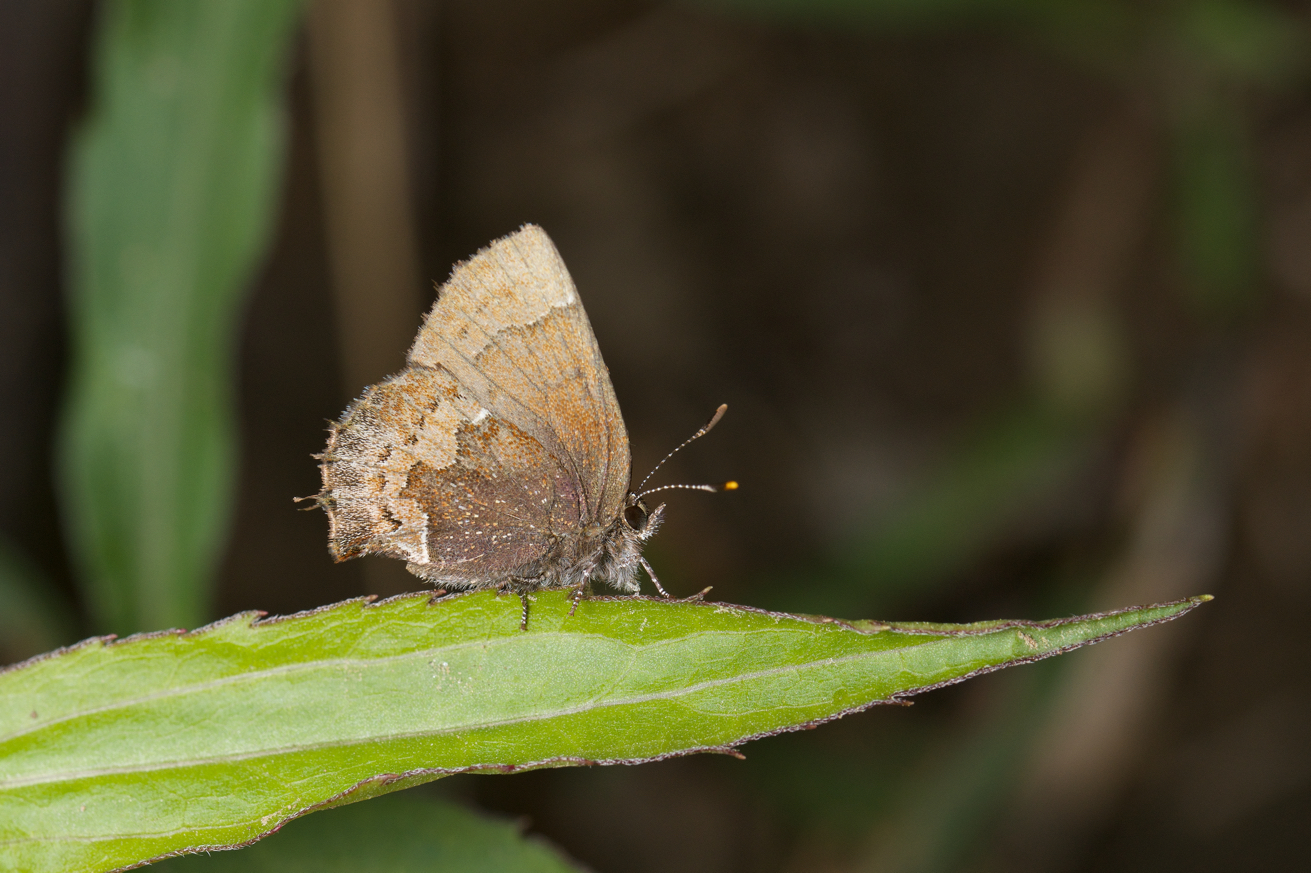Welcome back!! Since our initial April 11 foray to Box Elder SWMA (where we found two species) winter has been back to central Nebraska several times and spring seems to be on hold. But my wife Jen and I did find two new species (for 2020) at Sandy Channel SRA where we walk – a checkered skipper and alfalfa butterfly bringing our total to four species. I recently got a report from Steve Spomer that things were happening at Indian Cave State Park. So Sunday April 26 Jen and I made the 3 1/2 hour drive to see for ourselves. Once again Jon Nikkila and his family made the trip as well to document our findings with some excellent photographs. Once there we ran into an impressive young man that Steve has taken under his wing and sent there on a field trip as well. We all worked together as a loose group concentrating mainly on the scenic overlook area/trail three area.
We found nine species – those being Silver Spotted Skipper (Epargyreus clarus), Roadside Skipper (Amblyscirtes vialis), Zebra Swallowtail (Eurytides marcellus), Eastern Tiger Swallowtail (Papilio glaucus), Henry’s Elfin (Incisalia henrici), Spring Azure (Celastrina ladon), Eastern Tailed Blue (Cupido comyntas), Red Admiral (Vanessa atalanta) and Goatweed Butterfly (Anaea andria). Steve reported seeing a Gray Comma (Polygonia progne) earlier that week but unfortunately we did not.
The exclusive spring fliers are Henry’s Elfin and the Spring Azure. Henry’s Elfins are especially intriguing. In Nebraska they are almost always found in association with Redbud trees (Cercis canadensis) which is there larval host plant. We actually saw one female laying eggs on a redbud. The larvae develop quickly, pupate, and then spend the rest of the year in the pupal stage waiting for the next spring to emerge and start the cycle all over again.
Another neat butterfly that was out in abundance was the Zebra Swallowtail. In Nebraska the larvae of this species feed exclusively on Paw-paw trees whose range is largely restricted to the southeastern corner of the state. Unlike Henry’s Elfins they will fly again in a couple more generations this (and every) year.
The Goatweed was a neat butterfly to see, something an individual might not see every year.
I had been hoping that several Duskywing skippers (Erynnis sp.) would be out but we did not see them so evidently that flight is yet to come. Shouldn’t be to greedy I guess. So with the four species found earlier my year to date total is 13. Spring is just now arriving in central Nebraska so I’m looking forward to finding some things a little closer to home.
There were quite a few visitors to the park Sunday, many stretching their legs and walking their dogs, some hunting mushrooms, and then of course the butterfly people. Its a big park and there was plenty of room for everyone to maintain a proper distance and still enjoy the day. Here are some pics Jon took and was generous enough to share.
Citizen science – Several years back I found a handful of Henry’s Elfins at Harlan County Reservoir, several hundred miles from the nearest Redbud tree. So evidently they have an alternative larval hostplant and thus might turn up anywhere. If you should come across this species anywhere, but especially outside of southeast Nebraska please report in to NebraskaButterflies@gmail.com.



